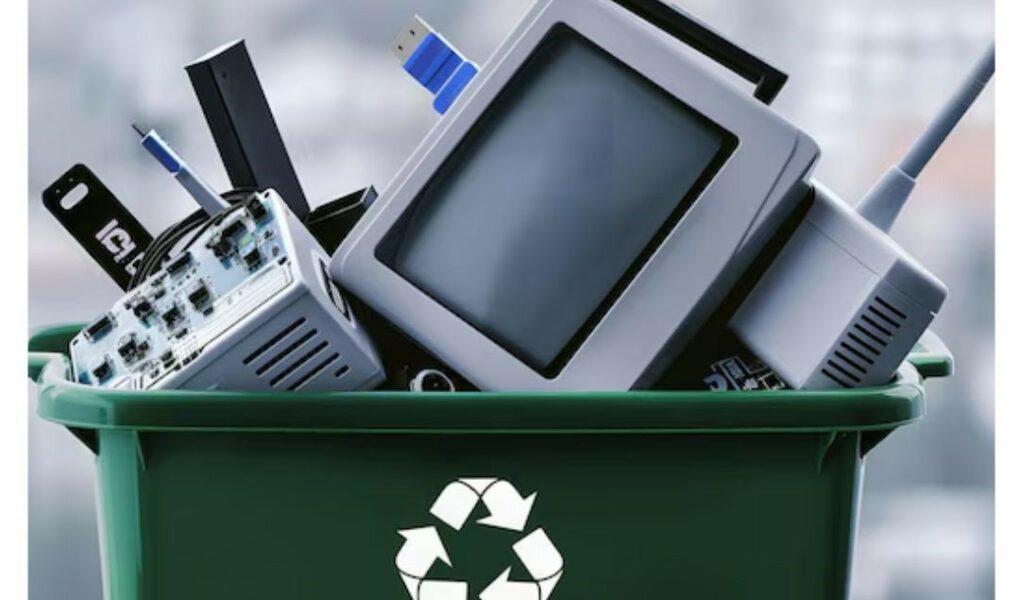As technology continues to advance at an unprecedented pace, the issue of electronic waste (e-waste) has emerged as a significant environmental challenge. Millions of tons of electronic devices are discarded annually, creating a mounting crisis that threatens both the environment and human health. Improper disposal of e-waste can lead to the release of hazardous substances, including lead, mercury, and cadmium, which can contaminate soil, water, and air. Thus, understanding and promoting sustainable e-waste recycling practices has never been more critical.
Expert like Neeraj Sharma provide valuable insights into innovative practices that enhance e-waste recycling efforts. His advisory role in a leading e-waste recycling company underscores the importance of education, collaboration, and sustainable practices in tackling the e-waste crisis. By sharing his expertise, Neeraj Sharma helps guide companies toward more effective e-waste management solutions.
How Innovative Practices are Shaping E-Waste Recycling
The Growing Challenge of E-Waste
As technology advances rapidly, electronic waste (e-waste) has become a significant environmental challenge. With an estimated 57.4 million metric tons generated globally each year, improper disposal of these devices can lead to toxic substances contaminating our environment. Therefore, sustainable practices in e-waste recycling are essential. Neeraj Sharma, at a leading e-waste recycling company, emphasizes the need for awareness and responsible disposal methods to mitigate these issues. The company’s commitment to ethical e-waste management sets a high standard for the industry. His advisory role underscores the importance of education, collaboration, and sustainable practices in tackling the e-waste crisis. By sharing his expertise, Neeraj Sharma helps guide companies toward more effective e-waste management solutions.
Understanding the Environmental Impact
The improper disposal of e-waste can lead to the release of toxic substances such as lead, mercury, and cadmium into the soil and water. These hazardous materials can contaminate local ecosystems, harming wildlife and posing health risks to communities. Furthermore, e-waste often contains valuable metals like gold, silver, and copper, which are lost when devices are discarded rather than recycled. By developing innovative recycling practices, we can mitigate these environmental impacts while also recovering valuable resources.
Innovative Recycling Techniques
Innovative recycling techniques are vital in addressing the e-waste crisis. Companies are now utilizing advanced technologies to enhance the efficiency of e-waste recycling processes. For instance, mechanical shredding combined with automated sorting systems can effectively separate recyclable materials from non-recyclable waste. Pyrometallurgical and hydrometallurgical methods are also being employed to recover precious metals from electronic devices, ensuring that these valuable resources are not wasted.
Additionally, some organizations are exploring the potential of biotechnological methods to recover metals from e-waste using microorganisms. This approach offers a more environmentally friendly alternative to traditional methods, reducing the reliance on harmful chemicals and minimizing waste
Collaboration Among Stakeholders
Collaboration among various stakeholders, manufacturers, retailers, and consumers, is essential for effective e-waste management. Manufacturers can design products with recyclability in mind, ensuring that devices can be easily disassembled at the end of their life cycle. Retailers can implement take-back programs, providing convenient options for consumers to return old devices for recycling. Such collaborations create a more integrated approach to e-waste management, fostering a culture of sustainability.
Emphasizing Repair and Refurbishment
Promoting repair and refurbishment of electronic devices is another critical aspect of reducing e-waste generation. Instead of discarding malfunctioning devices, consumers should be encouraged to seek repairs or refurbished products. This not only extends the life of electronic devices but also reduces the demand for new products, ultimately decreasing the volume of e-waste produced. Companies that focus on refurbishing electronics can play a significant role in this shift, offering consumers affordable and sustainable alternatives to new devices.
Advocating for Regulatory Measures
Advocating for regulatory measures is vital in establishing a framework for responsible e-waste management. Governments and regulatory bodies can implement policies that hold manufacturers accountable for the entire lifecycle of their products. Extended Producer Responsibility (EPR) programs, for example, require manufacturers to take responsibility for the disposal of their products after consumers are finished with them. Such regulations encourage companies to invest in sustainable design and recycling practices, ultimately benefiting the environment.
Conclusion
In conclusion, addressing the e-waste challenge requires a multifaceted approach, encompassing responsible recycling, reduced waste generation, and increased public awareness. Neeraj Sharma, provides invaluable advice focused on enhancing e-waste management practices. By adopting these practices and learning from experts like Sharma, a more sustainable future for generations to come can be achieved. Ensuring that electronic waste is handled responsibly will pave the way for a cleaner, healthier planet.




